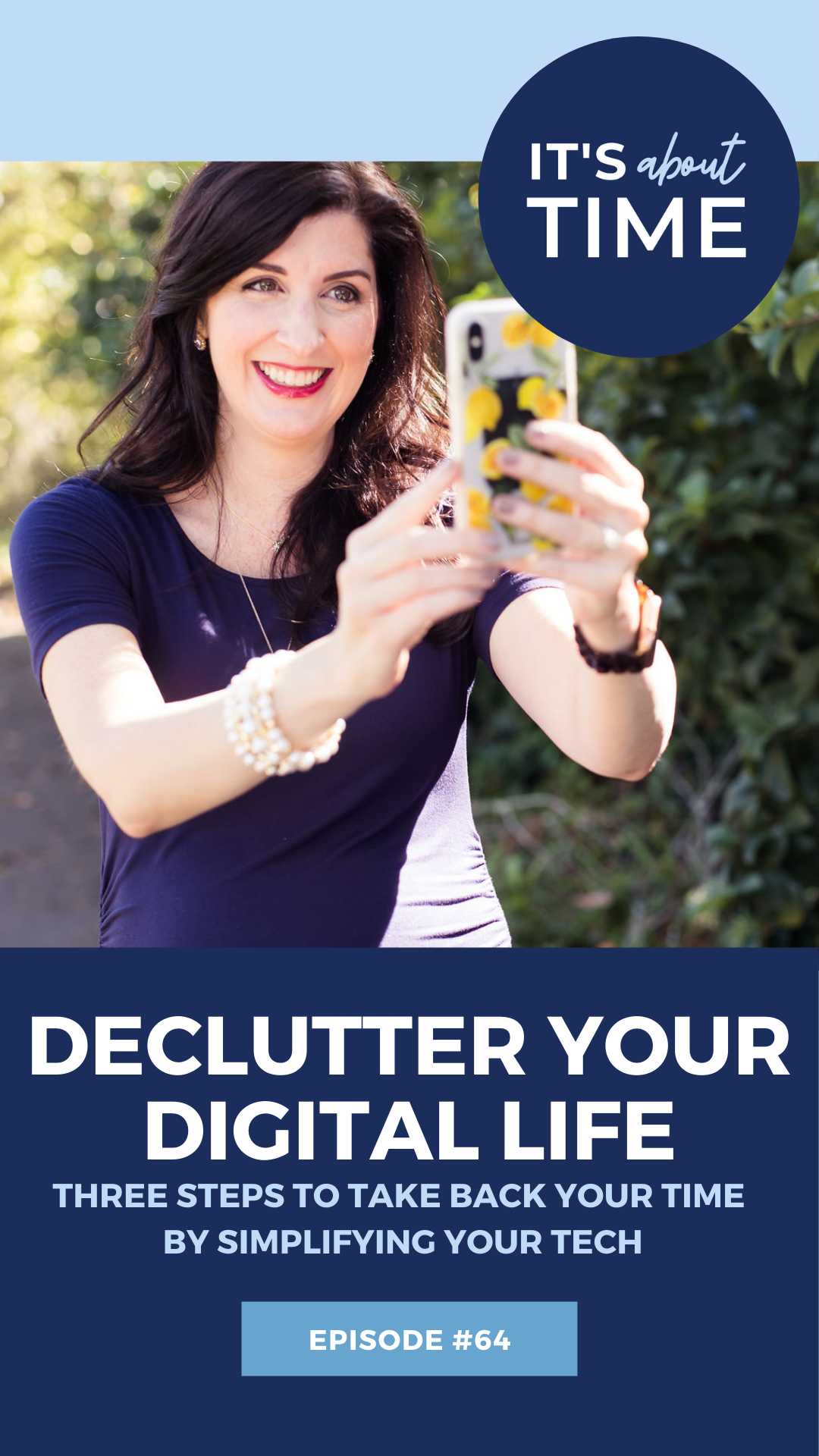Digital Minimalism Simplify Your Online Life to Boost Productivity

In an age where online distractions are just a click away, finding focus can feel like a daunting task. Digital minimalism offers a framework for simplifying your online life, helping to cut through the noise and restore clarity. By adopting this approach, you can streamline your digital interactions and ultimately increase your productivity.
With technology constantly evolving, our screens can become cluttered not just with notifications but with overwhelming choices and information overload. Embracing digital minimalism means evaluating your online habits and prioritizing what truly matters to you. This shift in perspective can lead to more intentional use of technology, thereby enhancing both your mental well-being and efficiency.
In this article, we will explore the Top 5 strategies for implementing digital minimalism in your life. Each tactic is designed to streamline your online experience, allowing you to focus on what is most important. Get ready to reclaim your time and enhance your productivity with some practical insights.
Top 5: Digital Minimalism – Simplifying Your Online Life to Boost Productivity
In today’s hyper-connected world, our attention is constantly being pulled in multiple directions by various digital platforms and devices. This has given rise to the concept of digital minimalism, a lifestyle choice that prioritizes a decluttered digital space and intentional tech usage. By adopting digital minimalism, individuals can reclaim their time, enhance productivity, and improve overall well-being. Let’s explore five practical strategies to transform your digital life, starting with number five!
5. Organize Your Digital Files
Just as a cluttered desk can hinder your productivity, a chaotic digital environment can create unnecessary stress. Digital clutter can lead to wasted time and increased anxiety, particularly when you can’t find critical documents or files. Here’s how to take control:

- Consistent Naming Conventions: Establish a clear and consistent way to name your files and folders. Whether it’s categorizing by date, project, or type, having a standard format makes retrieval a breeze.
- Regular Maintenance: Set aside time each month to declutter your digital storage. Delete files you no longer use, archive older documents, and ensure that your essential data is easily accessible.
- Cloud Storage Solutions: Utilize cloud-based storage services like Google Drive, Dropbox, or OneDrive. These platforms keep your files secure and accessible from any device, eliminating the need for physical hardware clutter.
By systematically organizing your digital files, you significantly reduce the time spent searching for information, thus enhancing your productivity and reducing stress.
4. Limit Digital Notifications
Our digital devices are designed to keep us engaged, often through the use of constant notifications. While these alerts can be useful, they often interrupt our focus, leading to a fragmented workflow. Consider the following approaches to manage notifications more effectively:
- Evaluate Your Apps: Take a thorough look at your installed applications and decide which ones truly require your real-time attention. Turn off notifications for apps that aren’t crucial to your daily life.
- Use ‘Do Not Disturb’ Features: Most devices offer “Do Not Disturb” modes that silence alerts during specified times. Utilize these features during working hours or important tasks to maintain focus.
- Designate Tech-Free Times: Schedule blocks of time each day to disconnect from your devices entirely. This deliberate disconnect can help reset your mind and improve long-term focus.
By curbing unnecessary notifications, you’ll foster a tranquil digital atmosphere conducive to deep work and creative thinking.
3. Audit Your Digital Tools
Over time, it’s easy to accumulate a plethora of digital tools for various purposes. However, not all of these tools contribute positively to your productivity. Conducting a digital tool audit is an effective way to streamline your workflow:
- Assess Functionality: Carefully evaluate whether each tool serves its intended purpose effectively. If there are more efficient options available, consider making a switch.
- Unsubscribe from Services: Identify any software subscriptions or services that you no longer use and cancel them. This not only reduces clutter but also saves you money in the long run.
- Prioritize Versatile Tools: Opt for all-in-one applications that can manage multiple tasks, instead of juggling numerous single-purpose tools that can fragment your workflow.
By focusing on a concise and efficient digital toolkit, you eliminate distractions and maintain a focus on what truly enhances your productivity.
2. Simplify Your Online Presence
In an era where being constantly connected is the norm, having an extensive online presence can be overwhelming. Simplifying your digital footprint can help you maintain authenticity and sanity:
- Limit Social Media Accounts: Focus on the platforms that align best with your personal and professional goals. Deactivating accounts you don’t interact with frees up mental space and reduces distraction.
- Curate Your Feed: Follow accounts that inspire and educate, and unfollow those that don’t add value. This ensures a more positive and productive social media experience.
- Engage Purposefully: Allocate specific times of the day for checking social media, thus preventing aimless scrolling and helping you engage more meaningfully.
Streamlining your online presence not only alleviates stress but also allows you to focus on genuine interactions and content that matters.
1. Adopt a Digital Detox Routine
The ultimate step in embracing digital minimalism is integrating regular digital detoxes into your routine. These detoxes act as a reset for your mind, contributing to clarity and mental health:
- Daily Disconnect: Dedicate specific hours each day to be completely offline, engaging in non-digital activities that you enjoy.
- Weekend Detox: Challenge yourself with technology-free weekends to better connect with the physical world and loved ones.
- Digital-Free Activities: Foster hobbies, such as reading, cooking, or exercising, that don’t involve screens. This can rejuvenate your mind and body.
Regularly practicing digital detox routines helps you reclaim autonomy over your time and encourages a balanced life between technology and reality.
In conclusion, embracing digital minimalism is a continual process of making intentional choices about how you engage with technology. By rethinking and reorganizing your digital interactions, you carve out space for more meaningful engagements and a productive lifestyle. While the journey of digital minimalism begins with incremental steps, its impact on your life can be profoundly transformative and liberating.
| Category | Key Features | Advantages | Disadvantages | Ideal Users |
|---|---|---|---|---|
| Digital Tool Organization | Application categorization and prioritization | Improved productivity through streamlined workflows | Might require time to initially set up | Busy professionals seeking efficiency |
| Content Curation | Use of platforms to filter and manage information | Minimized information overload leading to better focus | May miss out on important content if not curated properly | Content creators and marketers |
| Digital Decluttering | Systematic removal of unused files and applications | Enhanced device performance and increased storage space | Potential loss of important files if not careful | Individuals looking to streamline their devices |
| Mindful Technology Use | Setting boundaries for screen time and tech use | Improved mental well-being and higher productivity levels | Requires discipline and commitment | People struggling with digital distractions |
Exploring the realm of minimalismo digital unveils a myriad of strategies designed to simplify our online lives while significantly enhancing productivity. The key to unlocking these benefits lies in the careful categorization and prioritization of digital tools. By organizing applications effectively, busy professionals can experience a marked increase in productivity as they streamline workflows. However, it’s worth noting that the initial setup may require an investment of time. Another crucial aspect of this digital minimalism journey is content curation. By utilizing various platforms to filter and manage information, one can successfully navigate the overwhelming tide of information that inundates us daily. The result? A clearer focus, with minimized information overload. Nonetheless, there lies a risk of missing vital content if the curation process isn’t executed thoughtfully.Furthermore, digital decluttering emerges as a powerful weapon in the arsenal of minimalismo digital. Systematically purging unused files and applications not only enhances device performance but also liberates precious storage space. Yet, caution is warranted to avoid inadvertently losing critical files in the process.Lastly, embracing mindful technology use enables individuals to set healthy boundaries around screen time and device usage. This practice can lead to improved mental well-being and fuel higher productivity levels. Nevertheless, it demands a commitment to self-discipline and a keen awareness of one’s digital habits, particularly for those grappling with the realities of persistent distractions.The principles of minimalismo digital encourage a reevaluation of our relationships with technology, ultimately steering us toward a more intentional and productive online existence.
Frequently Asked Questions About Digital Minimalism
What is digital minimalism and how does it affect productivity?
Digital minimalism is a philosophy that encourages individuals to simplify their digital life by focusing on essential online tools and eliminating distractions. By consciously curating the digital content and interactions, individuals can free themselves from the constant bombardment of digital noise. This approach can lead to significant improvements in productivity as it allows for more focused and deliberate work, minimizing time spent on non-essential tasks.
How can I start implementing digital minimalism in my daily routine?
Starting with digital minimalism involves evaluating your current digital habits and identifying areas that need simplification. Begin by decluttering your digital devices, unsubscribing from unnecessary emails, and turning off non-essential notifications. Consider setting designated times for checking emails and social media to avoid constant interruptions. These steps can help create a calmer digital environment and improve concentration and efficiency over time.
What are some benefits of adopting a digital minimalist lifestyle?
Adopting a digital minimalist lifestyle offers a variety of benefits including increased focus, improved mental health, and a stronger sense of control over your time. By reducing digital clutter, you can spend more time on meaningful activities that align with your personal goals. Additionally, this approach can decrease stress levels associated with information overload and digitally-induced anxiety, fostering a healthier equilibrium between online and offline life.
Is digital minimalism suitable for everyone, including professionals who depend on technology?
While digital minimalism might seem challenging for professionals whose work relies heavily on technology, it can be tailored to fit various needs. The key is to identify which digital tools are crucial for productivity and cut back on those that aren’t. This approach promotes a more intentional use of technology, helping maintain efficiency while preventing burnout. It is about finding a balance that enhances, rather than detracts from, professional and personal fulfillment.
Are there any potential drawbacks to digital minimalism?
One potential drawback of digital minimalism is the risk of becoming disconnected in a world where digital interactions are sometimes necessary for social and professional networking. However, maintaining a thoughtful balance between minimalism and connectivity can mitigate this risk. It’s important to strategically select and engage in digital activities that provide value. By doing so, individuals can enjoy the benefits of minimalism without feeling isolated or out of touch.
Conclusion: Embracing Digital Minimalism for Enhanced Productivity
Digital minimalism is a compelling approach towards achieving a more organized and productive online life. By focusing on reducing digital clutter and prioritizing essential tools and information, we can streamline our digital interactions. This, in turn, enables us to focus on what truly matters, both personally and professionally. Eliminating unnecessary digital distractions paves the way for more meaningful engagement with technology, making room for creativity and innovative thinking.
Throughout this exploration, we highlighted some key strategies: intentionally curating our digital environment, setting boundaries with our devices, and periodically auditing our digital consumption. By adopting these practices, individuals can regain control over the time and energy they invest online. As we declutter our digital spaces, we naturally foster a sense of calm and clarity, providing the mental space to pursue our goals with renewed vigor.
Moreover, embracing digital minimalism is not just about productivity; it’s also about enhancing the quality of our online experiences. By consciously choosing to engage only with content and activities that align with our values and objectives, we create a more meaningful digital presence. This thoughtful approach promotes personal growth, improved focus, and a better balance between our online and offline lives.
In a world inundated with digital noise, the principles of digital minimalism offer a clear path to personal organization and efficiency. For those seeking to optimize their productivity and lead a more intentional life, it’s an invitation to evaluate and refine their relationship with technology. As we continue to integrate digital tools into our lives, considering how we engage with them could be the key to unlocking our full potential.


